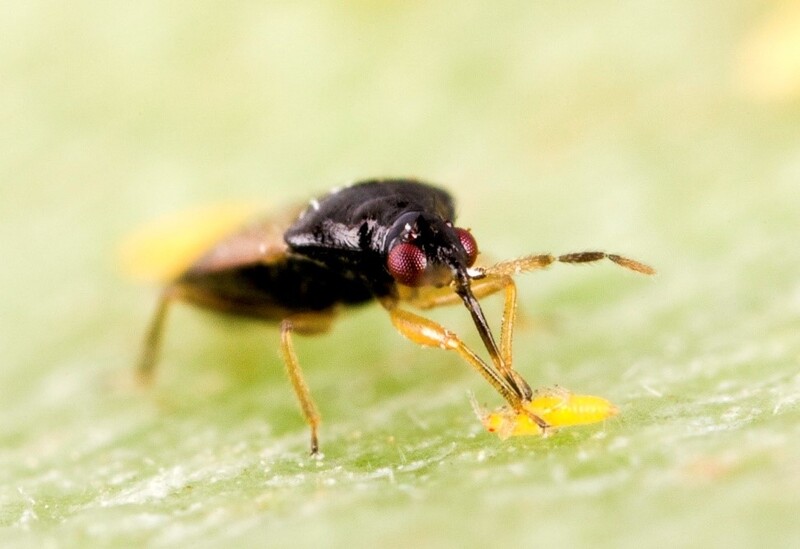Control of thrips using the predatory bug Orius laevigatus in strawberry crops.
Thrips are one of the most difficult pests for the strawberry grower. They are often impossible to control using insecticides, due to their inherent ability to develop resistance, and generally secretive nature, particularly so in the case of the western flower thrips Frankliniella occidentalis.
The use of predatory mites, especially Neoseiulus cucumeris (Thripex) often forms the backbone of the biological programme to control thrips on strawberries. However, the pest can nevertheless become problematic during the summer, and strawberry growers are increasingly using the predatory bug Orius laevigatus (Thripor) in tunnels or glasshouses, to help control thrips. Orius is a highly effective predator of thrips, attacking motile stages of the pest, including the adults. The presence of pollen enhances the rate of development of Orius, hence they are frequently found in the flowers.
 Adult Orius feeding on thrips.
Adult Orius feeding on thrips.
The establishment of Orius is most effective at day temperatures in excess of 180C, and in view of this, the introduction of the predatory bug is generally not carried out until the second half of May, or early June. Introduction rates are typically 1-2 Orius per plant, the higher rate for more difficult situations, with a minimum of two introductions at 7-14 day intervals.
The ‘window’ for introduction of Orius is relatively narrow since fast establishment of the predator is the aim for optimum control of thrips. It should also be borne in mind that capsids often start to occur in strawberry crops from late July, requiring the application of insecticides to prevent damage to the crop, but which can also prove harmful to Orius. The period when Orius can help control thrips can therefore be limited to 6-8 weeks if capsid occurs. However, such is the effectiveness of Orius against thrips that strawberry growers are advised to introduce the predator from the second half of May, to further protect their crops from the pest.